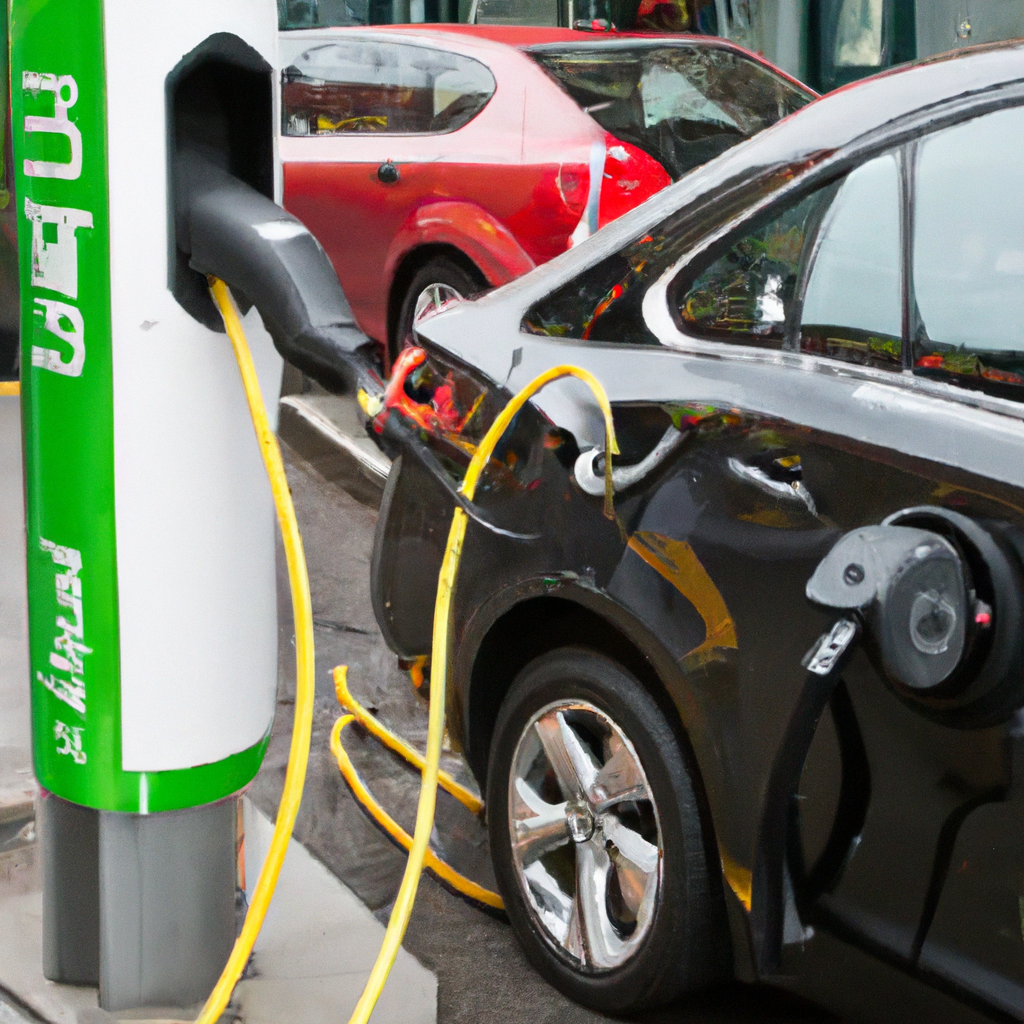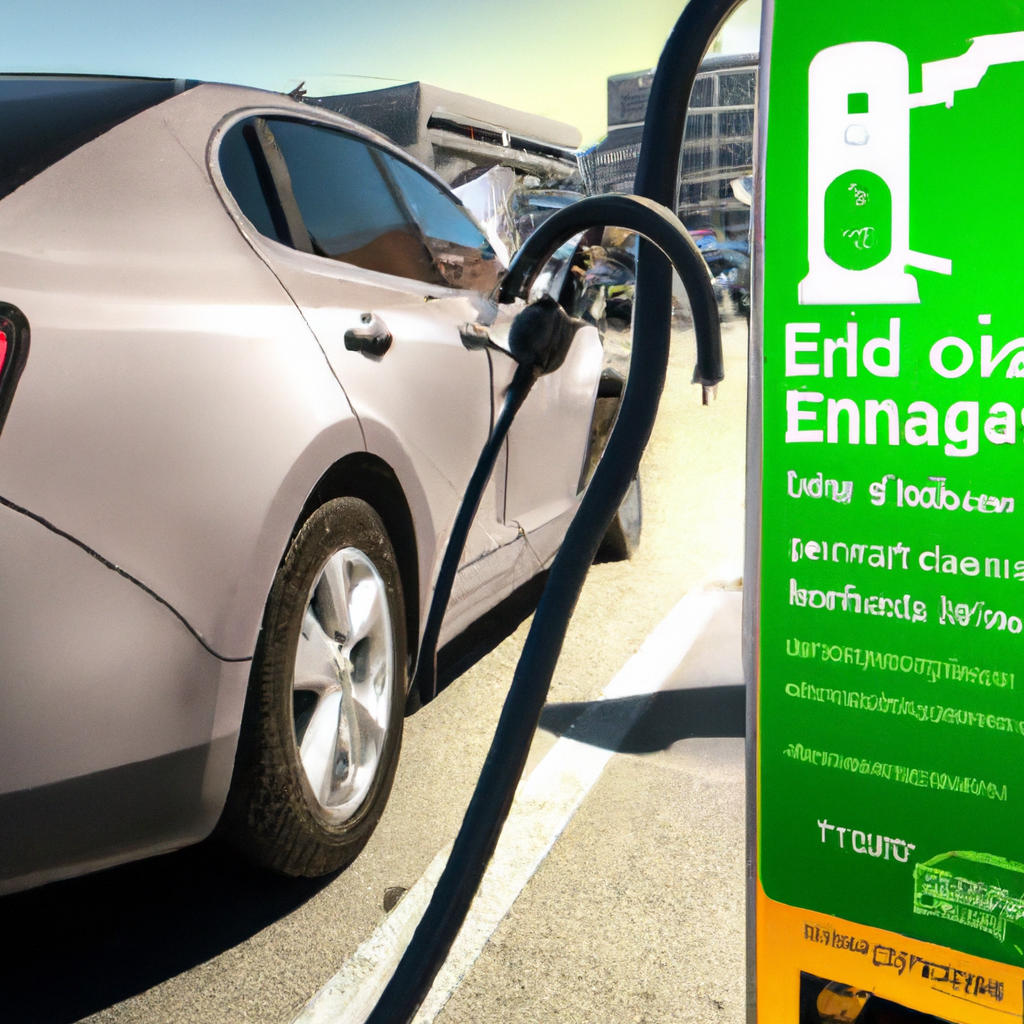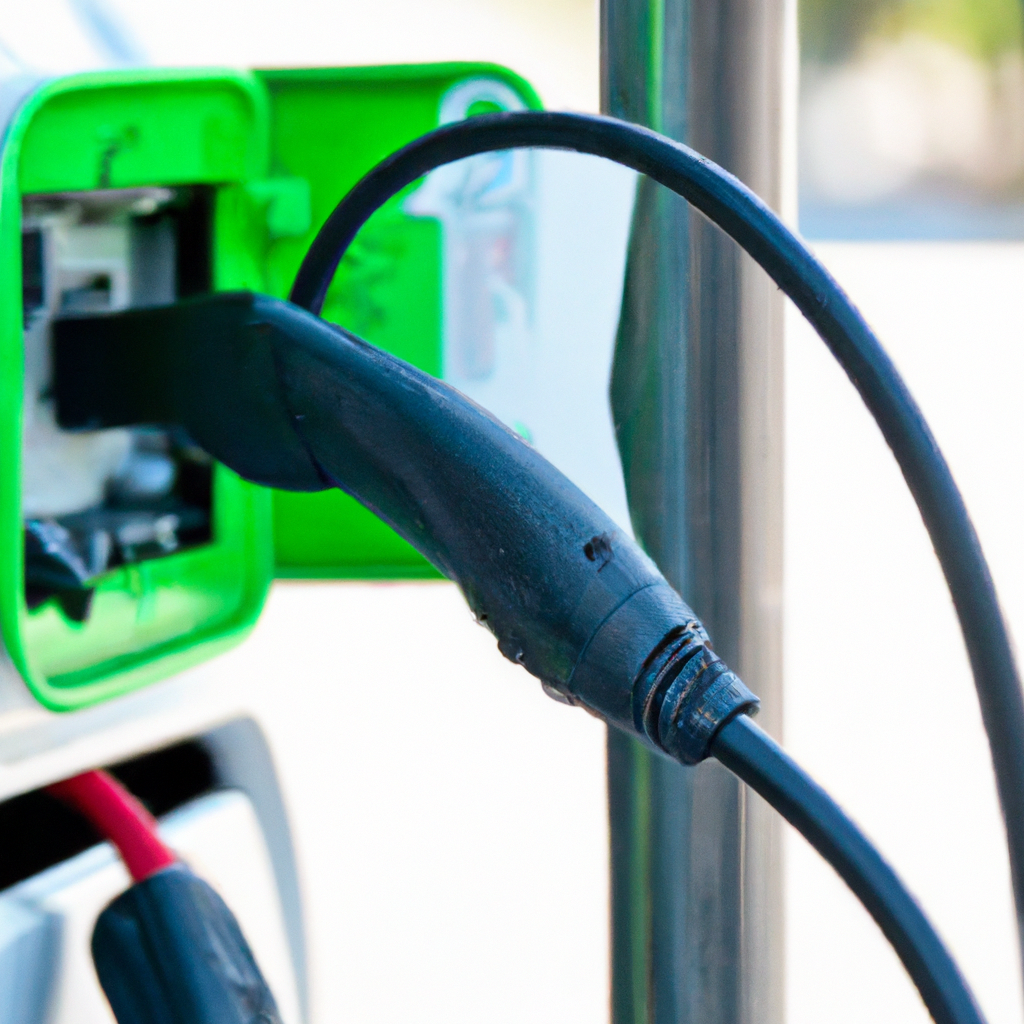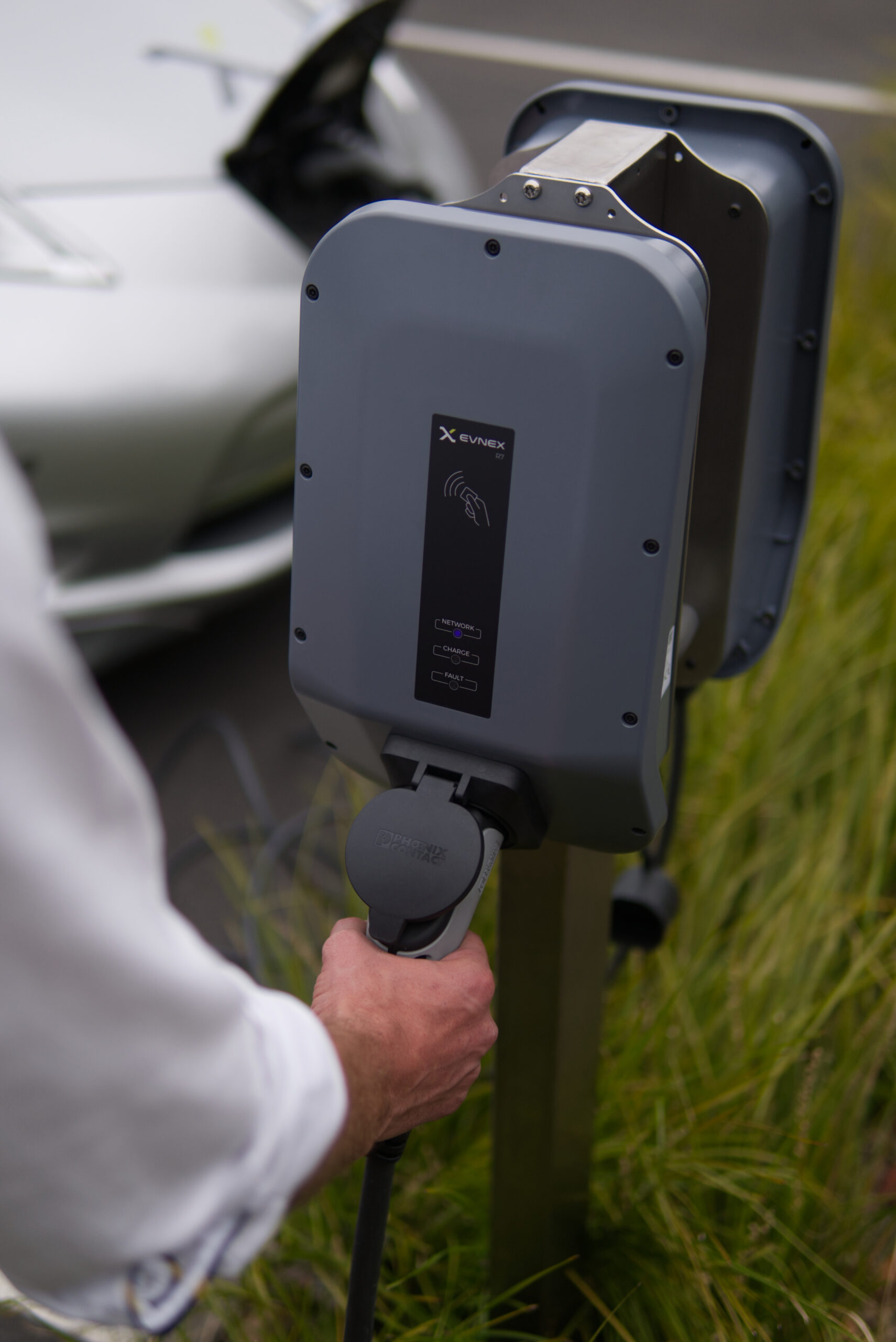EV Chargers And Public Policy: Government Incentives And Regulations
October 5, 2023 | by Jacob Kang

In this article, we will explore the fascinating realm of electric vehicle (EV) chargers and how they intersect with public policy. As our world continues to prioritize sustainability and reduce carbon emissions, the adoption of electric vehicles is steadily gaining momentum. However, the infrastructure required to support this transition is a complex web of government incentives and regulations. From financial incentives to encourage charger installation to safety standards and accessibility requirements, these policies play a crucial role in shaping the future of EV charging. So, join us as we unravel the intricate relationship between EV chargers and public policy, and discover how these factors are driving the widespread adoption of electric vehicles.
Types of EV Chargers
Level 1 Chargers
Level 1 chargers are the most basic type of electric vehicle chargers available. They are typically used in residential settings and provide a convenient way to charge your electric vehicle using a standard 120-volt power outlet. Level 1 chargers offer a slow charging speed, typically adding about 4-5 miles of range per hour of charging. While they are the slowest option, they can still be beneficial for overnight charging at home or in situations where time is not a constraint.
Level 2 Chargers
Level 2 chargers are the most common type of charging stations found in public and commercial locations. They require a 240-volt power source, similar to the one used for household appliances like clothes dryers or electric stoves. Level 2 chargers provide a faster charging speed compared to Level 1 chargers, usually adding about 20 to 25 miles of range per hour of charging. This makes them suitable for longer stops, such as at workplaces, shopping centers, or public parking lots.
DC Fast Chargers
DC Fast Chargers, also known as Level 3 chargers, provide the fastest charging speed currently available for electric vehicles. They utilize direct current (DC) power instead of alternating current (AC) like the other charger types. DC Fast Chargers can add around 100 miles of range in just 20-30 minutes of charging, making them ideal for long-distance travel and quick pit stops. These chargers are typically found along highways, in rest areas, or at dedicated EV charging stations.
 Image: EV Charger Types
Image: EV Charger Types
Government Incentives for EV Chargers
Tax Credits and Rebates
Many governments offer tax credits and rebates as incentives for the installation of electric vehicle chargers. These incentives reduce the cost of purchasing and installing EV chargers for individuals, businesses, and property owners. They can help offset some of the upfront expenses and make EV charger installation more affordable. Tax credits and rebates vary by location, so it’s important to research and take advantage of the available incentives in your area.
Grants and Funding Programs
Government grants and funding programs are another way to promote the deployment of EV chargers. These programs provide financial assistance to organizations or local governments that want to install charging infrastructure. Grants can cover a portion of the costs associated with purchasing and installing charging stations, making it more feasible for businesses and communities to invest in EV charging. By offering financial support, governments encourage the expansion of charging networks.
Infrastructure Development Support
Governments can provide infrastructure development support to facilitate the installation of EV chargers. This support includes guidance on charging station locations, technical assistance, and planning resources. By helping with the planning and implementation process, governments can streamline the installation of chargers and ensure they are strategically placed to meet the needs of electric vehicle owners.
Reduced Permitting Fees
To further incentivize the installation of EV chargers, governments can reduce or waive permitting fees associated with charging station installation. Permitting fees can often be a significant expense, especially for commercial or public charging projects. By reducing these fees, governments can lower the overall cost of installing charging infrastructure and encourage wider adoption of electric vehicles.
 Image: Government Incentives
Image: Government Incentives

This image is property of images.unsplash.com.
Role of Public-Private Partnerships in EV Charger Deployment
Collaboration between Governments and Private Sector
Public-private partnerships play a crucial role in the deployment of EV chargers. Collaboration between governments and the private sector can accelerate the installation of charging infrastructure by leveraging each party’s resources and expertise. Governments can provide funding, regulatory support, and access to public spaces, while private companies can bring technological innovations and investment. This collaborative approach ensures that EV chargers are deployed efficiently and effectively.
Investment from Utility Companies
Utility companies have a vested interest in the growth of electric vehicle adoption. They have the necessary infrastructure, such as power grids, to support the increased demand for electricity due to EV charging. By investing in EV charging infrastructure, utility companies can expand their customer base and revenue streams. Additionally, utility companies can offer specialized charging rates and incentives to EV owners, further driving the adoption of electric vehicles.
Shared Financing Models
Shared financing models, such as public-private partnerships or joint ventures, can help distribute the financial burden of EV charger deployment. These models involve multiple stakeholders pooling their resources to finance charging infrastructure projects. By sharing the costs, risks, and benefits, these partnerships make it easier for governments, businesses, and other organizations to invest in EV chargers. Shared financing models can also foster collaboration and ensure a sustainable approach to the expansion of charging networks.
 Image: Public-Private Partnerships
Image: Public-Private Partnerships
Regulations and Standards for EV Charger Installation
Building Codes and Permitting Requirements
Building codes and permitting requirements ensure that EV chargers are installed safely and adhere to construction standards. These regulations cover aspects such as electrical wiring, load capacities, and proper installation techniques. By enforcing these codes, governments can safeguard the integrity of charging infrastructure and protect the public from potential hazards. It is essential for individuals and businesses to consult local building codes and obtain the necessary permits before installing EV chargers.
Safety and Technical Standards
Safety and technical standards for EV charger installation establish guidelines for equipment manufacturers, installers, and operators. These standards cover areas like electrical safety, charging protocols, and interoperability. Compliance with these standards guarantees that EV chargers function reliably, provide a consistent charging experience, and mitigate any potential risks. Adhering to safety and technical standards ensures the long-term sustainability and usability of charging infrastructure.
Accessibility and Placement Guidelines
To ensure that EV chargers are accessible to all users, governments often provide guidelines for their placement and accessibility features. These guidelines may include recommendations for accessible parking spots, signage, and wheelchair accessibility. Compliance with these guidelines helps create an inclusive charging infrastructure that accommodates the needs of individuals with disabilities or mobility challenges. By considering accessibility in charger placement, governments promote equal access to electric vehicle charging facilities.
 Image: EV Charger Regulations
Image: EV Charger Regulations

This image is property of images.unsplash.com.
Zoning and Land Use Policies for EV Charging Stations
Parking Requirements and Space Allocation
Zoning and land use policies define parking requirements and space allocation for EV charging stations. These policies ensure that there are designated areas for charging infrastructure in public and private spaces. By mandating parking spots with charging stations, governments encourage the development of charging networks and make it more convenient for electric vehicle owners to find and access chargers. Proper space allocation helps prevent conflicts and ensures a seamless experience for EV drivers.
Location Restrictions and Zoning Laws
Certain locations may have restrictions on where EV charging stations can be installed. Zoning laws and regulations dictate the areas where charging infrastructure is permitted or prohibited. These restrictions prevent the installation of chargers in environmentally sensitive areas or locations that may disrupt traffic flow or aesthetics. Complying with location restrictions and zoning laws ensures that charging infrastructure is deployed appropriately and respects the surrounding environment.
Incentives for Co-Location with Other Facilities
To maximize the utilization of charging infrastructure, governments can provide incentives for co-locating EV charging stations with other facilities. Co-location refers to installing chargers in conjunction with existing amenities like shopping centers, hotels, or recreational areas. By offering incentives, such as reduced or free access to parking spaces, governments encourage property owners to integrate chargers into their establishments. Co-location makes EV charging more convenient and accessible for users while promoting the growth of charging infrastructure.
 Image: Zoning and Land Use Policies
Image: Zoning and Land Use Policies
Challenges in EV Charger Deployment
Cost and Affordability
One of the main challenges in EV charger deployment is the upfront cost and affordability. Installing charging infrastructure, especially in public or commercial settings, can be a significant investment. The cost includes not only the chargers themselves but also the necessary electrical infrastructure upgrades, installation labor, and ongoing maintenance. Overcoming this challenge requires governments to provide financial incentives, grants, and funding programs to make EV chargers more accessible to individuals and organizations.
Limited Availability of Charging Stations
The limited availability of charging stations is another hurdle in the widespread adoption of electric vehicles. Charging infrastructure is currently more concentrated in urban areas and along major highways, leaving gaps in rural and remote regions. This creates range anxiety for potential electric vehicle owners who may be concerned about finding charging opportunities during long trips or in areas with limited charging options. Expanding the charging network to ensure broad coverage is crucial to address this challenge.
Interoperability and Compatibility
Interoperability and compatibility issues arise when different charger manufacturers use different charging protocols or connectors. This can result in inconvenience and frustration for electric vehicle owners who may not be able to use a charger that differs from their vehicle’s requirements. To overcome this challenge, governments and industry stakeholders must work together to establish and promote standardized charging protocols and connectors. Standardization ensures seamless compatibility between chargers and electric vehicles, making the charging experience more user-friendly.
Grid Capacity and Energy Demand
The increased adoption of electric vehicles puts strain on the electrical grid and raises concerns about energy demand. Rapid charging of multiple vehicles simultaneously can potentially overload the grid, leading to power disruptions or increased electricity costs. To address this challenge, governments need to collaborate with utility companies to upgrade the grid infrastructure and develop smart charging solutions. Smart charging utilizes advanced technologies to manage charging demand and optimize the use of renewable energy sources, balancing the needs of electric vehicle users and the stability of the grid.
 Image: Challenges in EV Charger Deployment
Image: Challenges in EV Charger Deployment

This image is property of images.unsplash.com.
Environmental Impact Considerations
Promoting Renewable Energy Integration
Electric vehicle charging can have a positive environmental impact when coupled with the use of renewable energy sources. Governments can promote the integration of renewable energy into the grid and incentivize renewable energy generation for charging infrastructure. By doing so, the charging process becomes cleaner, reducing greenhouse gas emissions and air pollution associated with fossil fuel-based electricity generation.
Monitoring and Reducing GHG Emissions
To mitigate the environmental impact of charging infrastructure, governments can implement monitoring systems and policies that track greenhouse gas (GHG) emissions from charging stations. This data can be used to assess the carbon footprint of charging infrastructure and guide future policies aimed at reducing emissions. Governments can incentivize the use of renewable energy for charging or require the installation of carbon capture technologies to further minimize the environmental impact.
Minimizing Energy Loss During Charging
Efficiency in charging infrastructure is crucial to minimize energy loss and ensure that electricity is used as efficiently as possible. Governments can establish efficiency standards and guidelines for EV chargers to promote the use of energy-efficient technologies. Additionally, they can encourage research and development of advanced charging solutions that optimize energy transfer and reduce waste. By minimizing energy loss during charging, governments support sustainable energy consumption and reduce the environmental footprint of electric vehicles.
 Image: Environmental Impact Considerations
Image: Environmental Impact Considerations
Incentives for Workplace and Multi-Unit Dwelling EV Charging
Employer Incentive Programs
To encourage workplace charging, governments can incentivize employers to install charging infrastructure. Incentive programs may include grants, tax credits, or rebates for companies that offer charging stations to their employees. These incentives can offset the costs associated with charger installation and promote electric vehicle adoption among the workforce. Workplace charging allows employees to conveniently charge their vehicles while at work, increasing the overall accessibility of EV charging.
Mandated Charging Infrastructure in New Buildings
Governments can mandate the inclusion of EV charging infrastructure in new construction projects, such as multi-unit dwellings or commercial buildings. By requiring the installation of charging stations during construction, governments ensure that the necessary electrical infrastructure is in place from the beginning. This approach promotes long-term sustainability and future-proofs buildings for the increasing demand for EV charging.
Incentives for Property Owners and Managers
To encourage charging infrastructure in multi-unit dwellings, governments can provide incentives to property owners and managers. Incentives may include financial assistance, grants, or tax breaks for installing charging stations in apartment complexes or condominiums. Incentivizing property owners and managers promotes the proliferation of charging infrastructure in residential areas, making it more convenient for individuals living in multi-unit dwellings to own and charge electric vehicles.
 Image: Workplace and Multi-Unit Dwelling Charging
Image: Workplace and Multi-Unit Dwelling Charging

Addressing Equity and Accessibility in EV Charging Infrastructure
Ensuring Equitable Distribution of Chargers
To address equity issues, it is crucial to ensure the equitable distribution of charging infrastructure. Governments can prioritize the installation of chargers in areas that are underserved or lack access to reliable transportation options. By targeting low-income communities, rural areas, and historically disadvantaged neighborhoods, governments can reduce transportation inequalities and make electric vehicles more accessible to all individuals, regardless of their socioeconomic status.
Affordable and Accessible Charging Options
Affordability and accessibility of charging options are critical to ensuring that electric vehicle ownership is accessible to a wide range of individuals. Governments can encourage the development of affordable charging solutions, such as discounted charging rates or subscription-based charging plans. Additionally, offering diverse charging options, including both Level 1 and Level 2 chargers, caters to individuals who may not have access to high-speed charging solutions due to budget constraints or housing limitations.
Engaging Underserved Communities
Engaging underserved communities in the planning and decision-making processes is essential to ensure their specific needs and concerns are addressed. Governments can establish community outreach programs, conduct surveys, and hold public meetings to gather input from underserved communities. Engaging these communities allows governments to tailor their policies and initiatives to address the unique challenges faced by these populations, fostering inclusivity and equity in the deployment of charging infrastructure.
 Image: Equity and Accessibility in EV Charging
Image: Equity and Accessibility in EV Charging
Analyzing the Economic Benefits of EV Charger Integration
Job Creation and Economic Growth
The integration of EV chargers can stimulate job creation and economic growth. Installing and maintaining charging infrastructure requires a skilled workforce, ranging from electricians and technicians to software developers and engineers. Local businesses can also benefit from the increased economic activity resulting from the presence of charging stations. As the demand for electric vehicles and charging infrastructure grows, the industry creates new job opportunities and contributes to the local economy.
Reduced Dependence on Fossil Fuels
By promoting electric vehicle adoption and the expansion of charging infrastructure, governments reduce dependence on fossil fuels for transportation. This reduction in fossil fuel consumption benefits the economy by reducing the reliance on imported oil and vulnerability to oil price volatility. As the transportation sector transitions to electric mobility, countries can redirect their energy spending to support domestic renewable energy sources, leading to a more sustainable and resilient energy system.
Revenue Generation and Taxation
EV charging infrastructure presents opportunities for governments to generate revenue and implement taxation strategies. Governments can implement charging fees or taxation policies on electricity consumption specifically for EV charging. These revenue streams can be allocated towards further expansion of charging infrastructure, maintenance, or other transportation-related initiatives. Revenue generation ensures the long-term sustainability and growth of charging networks while recouping some of the costs associated with their implementation and operation.
 Image: Economic Benefits of EV Charger Integration
Image: Economic Benefits of EV Charger Integration

RELATED POSTS
View all


